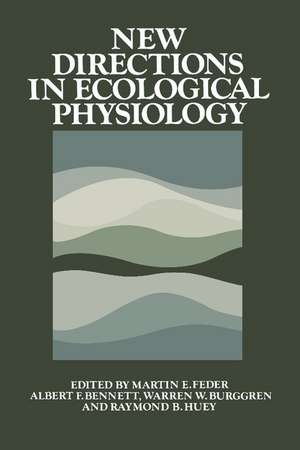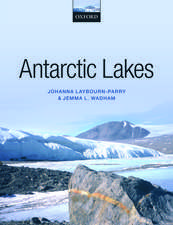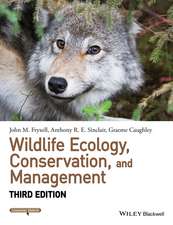New Directions in Ecological Physiology
Editat de Martin E. Feder, Albert F. Bennett, Warren W. Burggren, Raymond B. Hueyen Limba Engleză Paperback – 28 ian 1988
Preț: 521.62 lei
Preț vechi: 586.09 lei
-11% Nou
Puncte Express: 782
Preț estimativ în valută:
99.84€ • 108.49$ • 83.92£
99.84€ • 108.49$ • 83.92£
Carte tipărită la comandă
Livrare economică 21 aprilie-05 mai
Preluare comenzi: 021 569.72.76
Specificații
ISBN-13: 9780521349383
ISBN-10: 0521349389
Pagini: 378
Ilustrații: 1
Dimensiuni: 156 x 234 x 20 mm
Greutate: 0.54 kg
Editura: Cambridge University Press
Colecția Cambridge University Press
Locul publicării:New York, United States
ISBN-10: 0521349389
Pagini: 378
Ilustrații: 1
Dimensiuni: 156 x 234 x 20 mm
Greutate: 0.54 kg
Editura: Cambridge University Press
Colecția Cambridge University Press
Locul publicării:New York, United States
Cuprins
Contributors and discussants; Preface; 1. The accomplishments of ecological physiology Albert F. Bennett; Part I. Comparisons of Species and Populations: 2. Interspecific comparison as a tool for ecological physiologists George A. Batholemew; 3. The analysis of physiological diversity: the prospects for pattern documentation and general questions in ecological physiology Martin E. Feder; 4. Phylogeny, history, and the comparative method Raymond B. Huey; 5. A multidisciplinary approach to the study of genetic variation within species Dennis A. Powers; 6. Comparison of species and populations: a discussion William R. Dawson; Part II. Interindividual Comparisons: 7. Interindividual variability: an underutilized resource Albert F. Bennett; 8. The importance of genetics to physiological ecology Richard K. Koehn; 9. Genetic correlation and the evolution of physiology Stevan J. Arnold; 10. The misuse of ratios to scale physiological data that vary allometrically with body size Gary C. Packard and Thomas J. Boardman; 11. Interindividual comparisons: a discussion Douglas J. Futuyma; Part III. Interacting Physiological Systems: 12. Invasive and noninvasive methodologies in ecological physiology: a plea for integration Warren W. Burggren; 13. The use of models in physiological studies Peter Scheid; 14. Symmorphosis: the concept of optimal design Stan L. Lindstedt and James H. Jones; 15. Assigning priorities among interacting physiological systems Donald C. Jackson; 16. Physiological changes during ontogeny James Metcalfe and Michael K. Stock; 17. Interacting physiological systems: a discussion David J. Randall; 18. New directions in ecological physiology: conclusion Martin E. Feder; Author index; Subject index.
Descriere
This 1988 book outlines conceptual approaches to the study of physiological adaptation in animals.














